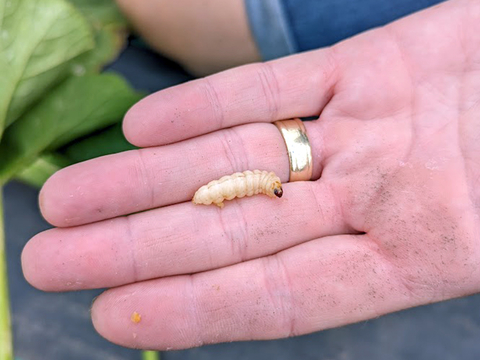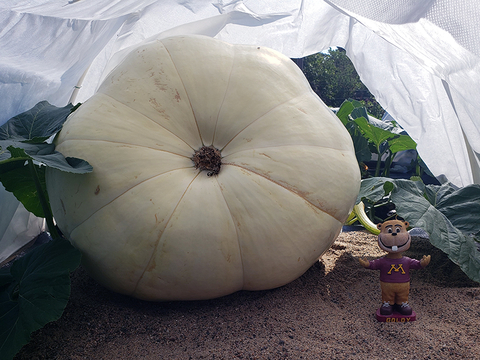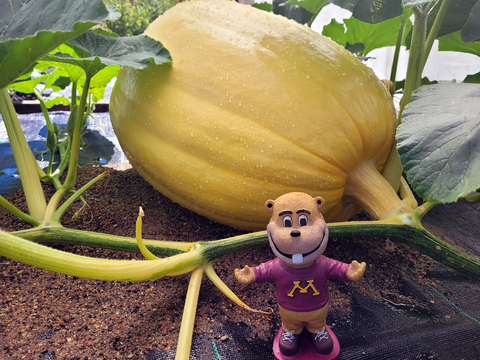Note: See CBS Minnesota news coverage This is what it takes to grow a giant pumpkin that'll compete in the state fair
Week of July 25
The week began with frustrating news — we found several squash vine borer larvae entry points on the main pumpkin vine. We were able to spot these entry points by the piles of frass left behind and decided that it would be necessary to conduct emergency surgery to extract them.
Armed with razor blades, alcohol, fungicide and parafilm, we began by disinfecting our blades with the alcohol, then making small vertical incisions along the stem near the entry points. Once we found the larvae, we removed them, treated the wound with copper fungicide to prevent fungal disease, and sealed the wound.
After the procedure, as a preventative measure, we decided to bury more of the vines’ nodes near the pumpkin in an attempt to provide continual nutrients if something were to happen to the main vine.
Before the pumpkins became too heavy to move, we placed them on wooden pallets covered in landscape fabric and sand. The sand helps the bottom of the pumpkin stay dry, keeps it clean, and makes it easier for the pumpkin to grow in than soil. The pallet will allow us to move the pumpkin, using a forklift, to a truck for transport (hopefully) to the Minnesota State Fair giant pumpkin competition.
We also installed hoops covered in shade cloth over the top of the pumpkins. The cloth provides shade to the pumpkins, reducing the potential for sun scald and preventing hardening of the skin which can slow growth. The cloth also provides protection from hail.
The pumpkins will soon be so heavy we won't be able to lift them without machinery. We have begun to take daily over-the-top (OTT) measurements to estimate their weight. Three measurements are taken, end to end, side to side, and the circumference of the pumpkin. These numbers are then put into a calculator provided by the Great Pumpkin Commonwealth (GPC), the committee that creates the rules and regulations regarding official giant pumpkin weighing.
As of August 2, the pumpkins are approximately 170 lbs. and 66 lbs. - an increase of 20 and 11 pounds, respectively in 24 hours.
We've named the pumpkins
After much deliberation over names for the pumpkins, we decided to call the larger northern pumpkin Audrey and the smaller one Seymour. Goldy Gopher has also made an appearance at the pumpkin patch. See just how big the pumpkins have grown in comparison to Goldy (who measures around 6 inches).




